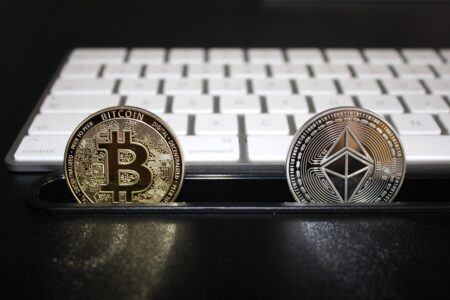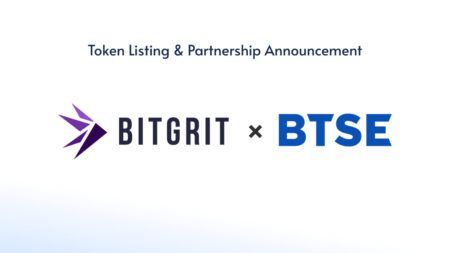In a recent episode of the Wealthion podcast, Raoul Pal, the CEO and co-founder of Real Vision and Global Macro Investor, joined Anthony Scaramucci for a deep dive into the current state of the markets. Pal shared his perspectives on why recession fears are overblown, why current market volatility should be embraced, and how the ongoing business cycle presents significant opportunities for investors.
Market Volatility: A Gift for Investors
Pal began the conversation by addressing the current volatility in the crypto markets, a characteristic he believes is intrinsic to the asset class. Historically, drawdowns of 30% or more are not uncommon, and for Pal, these periods of market turbulence represent opportunities rather than threats. He described these downturns as “macro spasms”—short-lived episodes that offer investors the chance to buy into the market at lower prices, enhancing long-term returns.
He emphasized that the business cycle is still in its early recovery phase, with inflation cooling, interest rates poised to drop, and liquidity set to increase. According to Pal, this creates a favorable environment for crypto and other risk assets. His strategy revolves around viewing these sell-offs as gifts that allow you to buy more and compound returns over time.
The Yen Carry Trade and Macro Spasms
The discussion then moved to the yen carry trade and its broader implications. Pal explained how movements in the yen can trigger market sell-offs, particularly when risk managers at banks and hedge funds are compelled to reduce exposure in response to yen appreciation. Drawing parallels to similar events in 2016, when central bank interventions and currency market adjustments led to market disruptions, Pal suggested that the current environment is different. He believes the business cycle is just beginning to turn up, and central banks, particularly in China, are likely to stimulate their economies further, providing a net positive for the markets.
The Central Bank’s Money Printer: A Market Safety Net
Pal also discussed the pivotal role of central banks in supporting markets through monetary stimulus, often referred to as “money printing.” Since the global financial crisis in 2008, central banks have consistently intervened to prop up markets, creating what Pal describes as a safety net. Pal says while this has led to currency debasement and erosion of purchasing power, it has significantly reduced the likelihood of a major market crash. Pal suggested that the probability of a 50% market downturn is much lower now compared to previous decades, largely due to central banks’ willingness to intervene.
The Distinct Roles of Bitcoin, Ethereum, and Solana in the Blockchain Ecosystem
Pal further elaborated on the unique roles that Bitcoin, Ethereum, and Solana play within the broader blockchain ecosystem. He compared these platforms to decentralized businesses that offer different attributes for various use cases. He says that Bitcoin, with its unparalleled security, remains the cornerstone of digital currency, perfectly suited as a store of value.
Pal says that Ethereum has established itself as the backbone of the finance industry within the crypto space. He highlighted Ethereum’s strong security, widespread adoption, and continuous innovation, making it the preferred platform for decentralized finance (DeFi) and valuable transactions. He noted that when it comes to large-scale financial operations, such as transferring substantial sums between banks, Ethereum is likely the blockchain of choice due to its battle-tested reliability.
Pal mentioned that Solana has emerged as a standout performer in the current market cycle, gaining significant traction due to its speed, user-friendly applications, and cost-effectiveness. While Pal does not believe Solana will surpass Ethereum, he sees it closing the gap significantly. Solana’s rapid growth and innovation have positioned it as a blockchain well-suited for retail and fast-moving applications. According to Pal, despite earlier issues with network stoppages, Solana has resolved these challenges and is now proving to be a reliable and secure platform, further solidifying its place in the blockchain hierarchy.
Pal’s price predictions for Solana are particularly bullish, with a range from $800 in a worst-case scenario to $2,500 in a blowoff top. He envisions Solana potentially reaching $1,000 or more by the end of this market cycle, underscoring his confidence in its continued growth and adoption.
Spot Crypto ETFs and the Rising Demand for Digital Assets
Pal also discussed the growing popularity of spot crypto ETFs. Despite recent market volatility, there has been a net inflow into crypto ETFs, signaling increased adoption and acceptance by traditional investors. He attributed this trend to a broader understanding of crypto’s role as a hedge against currency debasement and inflation.
Pal highlighted that the volumes in ETFs are driven by both net inflows and arbitrage opportunities, reflecting the growing sophistication of the market. He emphasized that the education efforts by various leaders in the crypto space, including his own, have helped investors better understand the inherent volatility of the asset class and the opportunities it presents.
The Future of Blockchain and NFTs
Looking ahead, Pal remains highly optimistic about the future of blockchain technology, predicting that the crypto space will expand from its current market cap of $2 trillion to $100 trillion by 2032. He emphasized that this would represent the largest and fastest accumulation of wealth in human history, driven by the removal of third parties in transactions and the resulting cost savings.
Pal also defended the long-term value of NFTs, arguing that they represent one of the most powerful technologies in the crypto space. While the initial wave of NFTs focused on digital art and collectibles, Pal sees a future where NFTs are used for everything from global ticketing and digital IDs to property deeds and derivative contracts. He believes that NFTs, by creating digital scarcity, will play a crucial role in maintaining value in a world where everything digital tends to lose value.
Political Implications and the Role of Government in Crypto
The conversation also touched on the potential impact of government policies on the crypto market, including the proposal for a national Bitcoin stockpile. Pal expressed skepticism about the necessity of such a reserve, given the U.S. dollar’s status as the world’s reserve currency. However, he acknowledged that if the U.S. government were to implement such a policy, it could have significant implications for the crypto market.
Pal and Scaramucci also discussed the upcoming U.S. presidential election and its potential impact on crypto. While it remains unclear how the new Democratic ticket of Harris-Walz would approach crypto regulation, Pal and Scaramucci stressed the importance of the industry’s influence, noting that 50 million Americans currently own crypto.








